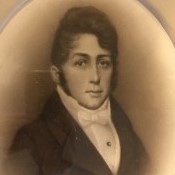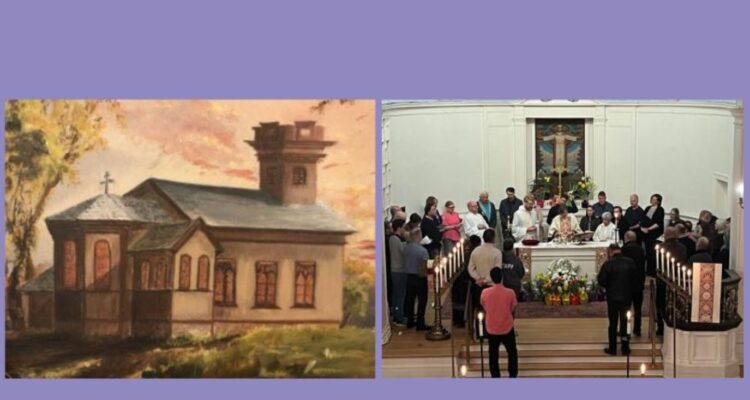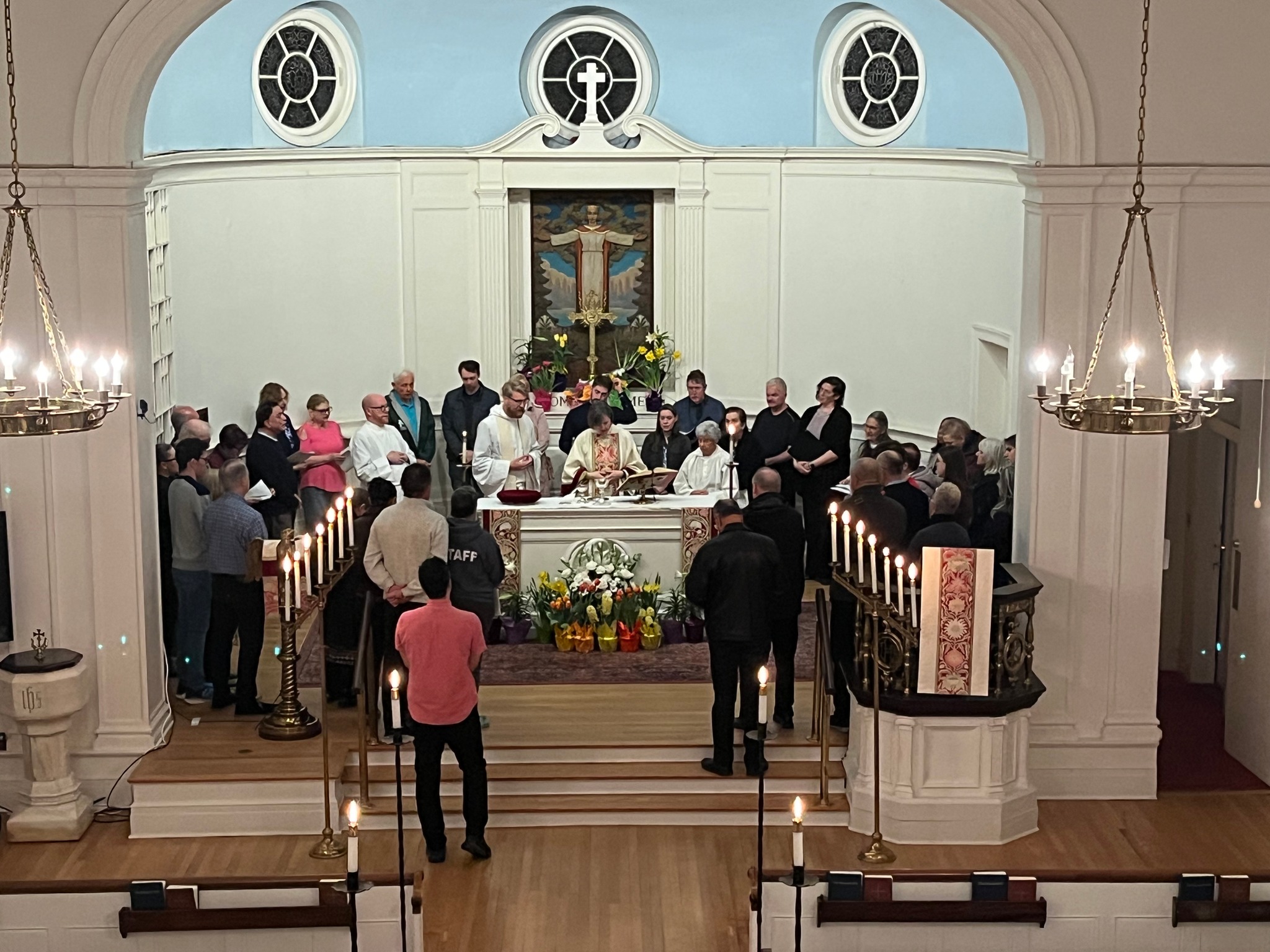Editor’s Note: This piece was first published by The Episcopal Diocese of Long Island.
This interview was conducted and written by The Rev. Dr. Craig D. Townsend, Historian in Residence for Racial Justice for the Diocese of Long Island.
At 7:30pm on November 2nd, the Feast of All Souls, the parish of Zion Episcopal Church, Douglaston, Queens, will unveil and dedicate a plaque in their sanctuary memorializing the persons enslaved by founding members of the parish. This is the first public and concrete response to the historical research members have been conducting over the past three years. It has been my pleasure to offer these members support and advice on a couple of occasions – but it is important to note that this work was undertaken before I began my work as Historian in Residence for Racial Justice for the Diocese of Long Island. Zion’s Rector, the Rev. Lindsay Lunnum, has supported this work from the beginning, and the Rev. Carl Adair, Assistant Rector, has been the leader of the effort. I asked Carl if he would answer a few questions about how Zion got to this place of acknowledging their difficult history in such a powerful way.
Townsend: Before I began the Uncovering Parish Histories project as a diocesan-wide effort, I heard that Zion was doing research into their complicity with slavery. Can you tell me how that got started?
Adair: In the last ten years or so, there have been a number of universities and other institutions grappling with the presence of enslaved people in their own history, and their ongoing entanglement with white supremacy; I had been following that work with interest. But it wasn’t until a few weeks after the murder of George Floyd in 2020 that I began to wonder if we could be one of those institutions. I did some quick Googling, and came across the Northeast Slavery Records Index. I plugged in the name of Zion’s most prominent founder, Wynant Van Zandt. If I’m honest, I did the search almost casually, as a matter of intellectual curiosity. But then a bunch of records popped up, and it felt like a punch in the gut. In that moment, I knew that if we pulled at these threads, it would open up a profound and challenging spiritual journey for us as a parish—and I didn’t know where it would lead. That’s when I started praying.

The church was founded and chartered in 1830 under the leadership of Wynant Van Zandt, a successful merchant and former alderman of New York City.
Soon after I found those records, I told The Rev. Lindsay Lunnum, Zion’s rector, and the wardens—and the then-junior warden said that she had Googled the very same thing that same week: she had found the same records showing that Wynant and Maria Van Zandt had enslaved at least 4 people. It was obvious that this wasn’t going to be my private pet project: we were going to do this as a community, and it felt like we were being led by the Holy Spirit. A small committee of researchers started meeting every other week to uncover more records, and to expand our sense of the context in which our founders lived.
There’s still so much for us to learn and digest. But over the last three years, we’ve found that our founding families enslaved at least 43 people in the years leading up to Zion’s founding. We’ve learned that the wealth Wynant Van Zandt built as a merchant was made in the trade of crops grown and harvested by enslaved people in the American South and in the Caribbean. And we’ve learned that Elsy Pine, one of the people Van Zandt enslaved, moved to Jamaica, Queens after she was manumitted: there, she and her husband Cato Bates became active in the movement for Black suffrage—a movement that grew out of a community of Black Episcopalians.
Townsend: Your team’s research isn’t finished, but the parish is ready to turn what you’ve learned so far into a public statement, a memorial plaque to be installed in Zion’s sanctuary. Tell me how that movement happened.
Adair: One theme of our work, especially in the last year, has been moving beyond information to transformation. It’s so important that we know the truth about our history. But it can be tempting to think that “knowing” is the end of the journey. We’re doing this work on our history in the faith that it’s both harder than that, and better than that. Because Jesus promises that the truth will set us free. I take that to mean that truth isn’t something that we have, it’s something that calls us to repentance and to new life; it makes demands on us; it liberates us. We can’t change the past, but living in the truth gives us, as a community, the freedom to act with integrity now, and in the future. Telling the whole truth allows us to honor the great gifts of Zion’s legacy, and to grieve and seek healing for the wounds we have inherited.
Last fall, the Zion leadership decided we needed to take some concrete action in this process of truth-telling. We wanted to ensure that the children of God our founders enslaved could never again be forgotten, and that their memory would be a perpetual challenge to the people of Zion to walk in the path of justice—as our founders failed to do, and as we ourselves so often fail to do. We also began to find it intolerable that our sanctuary included a marble memorial lionizing Wynant Van Zandt, while the people he had enslaved remained out of view. So the vestry approved the formation of a committee to discern the shape and scope of a memorial to the people our founders enslaved. That committee, which included Black and white folks, high school students and retirees, met more than a dozen times for prayer, discussion, and personal reflection. Over time we came to a consensus on where we wanted the memorial to be—in the sanctuary—and what we wanted it to convey. The hardest part was settling on the text: it took a long time, and we had to be patient. What did we really want to say? What were we prepared to commit to?
We got connected to a local Black artist named Ancil Farrell, who we commissioned to realize the memorial—and to make it his own. Ancil’s style is very organic: there is a sense of indomitable life roiling beneath the surface. That is part of what we want the memorial to convey.
Townsend: Say a bit about the parallel research your team undertook into the history of Zion’s connections with the Matinecock people. Any plans yet about how to memorialize that?
Adair: Yeah, so our research at Zion has had two strands. We’ve been trying to learn about the presence and absence of Black people at Zion over the last nearly 200 years; we’ve also been trying to understand Zion’s complex entanglement with the Matinecock. Zion was built on Matinecock land. We’ve rediscovered some parts of our legacy that we want to celebrate—for example, that Charles Waters, who was Matinecock and likely a native Algonquin speaker, served on Zion’s vestry and was later elected warden. Given what we know about the many ways that native people and native culture were being attacked and undermined in that era, it’s a real point of pride that Zion would elect a Matinecock man to its highest office of lay leadership.
But we’ve also learned more about some of the reasons that Zion is a place and symbol of pain, exclusion, and erasure for Matinecock people. One of the most difficult moments in this story came in 1931, when the City of New York desecrated an ancestral Matinecock burial ground a few blocks from Zion, in order to widen Northern Boulevard. The Matinecock had fought that plan for years, led by Chief Wild Pigeon—the nephew of Zion’s former warden Charles Waters. But we have no record that anyone from Zion joined in solidarity with that fight to protect those graves, even though our former warden, Charles Waters, was buried there. The city hastily exhumed the remains of about 30 Matineock people and reinterred them in Zion’s churchyard. And then, as if to pour salt in that wound, Zion allowed a white man to design a memorial at that new gravesite: a split rock that reads “Here rest the last of the Matinecoc.” The bitter irony is that Matinecock people were present at the unveiling of that memorial, and Matinecock people still come to Zion to bury loved ones among their ancestors. From the graveside, in their grief, they see a memorial that declares that they and their traditions no longer exist.
So, needless to say, there is work to be done at Zion to bring this complex history to light. But the existing memorial points to the real danger of doing that work in isolation, of “us” making a statement about “them.” We’re very blessed to be in relationship with Matinecock people living in Queens and on Eastern Long Island, and one of our next steps is to raise the question of repair with them—and to face our entangled histories together.
Townsend: What do you think your parishioners – those who did research, but the rest as well – have learned about the significance of an awareness of institutional history?
Adair: I keep coming back to an exchange that our two high-school aged committee members had—this was Gisele and Michaela Habibulla. Michaela said that the root of any progress is an understanding of the past, and Gisele agreed—and added that another part of progress is self-awareness about how that past is always present. So we have to make decisions about what we’re going to do with it, how we will respond to it.
Mo. Lindsay and I have been preaching about how all of us have habits and practices that we’ve developed over time, and at a certain point, many of us have to grapple with the fact that those things—which have become so intuitive, so “natural” feeling—are no longer working for us, if they ever did. They are not helping us become the people we want to be; they may even be standing in the way. The good news is that we can admit this and seek to turn toward God, trusting that our God is a God of grace. Trusting that God will meet us in our brokenness, in our frustration, in our not-knowing-what-to-do. God will receive that humility and desire and open a door for us to step through.
So I think this work on Zion’s history opens up ways for us to discern together about where we are called to go and how we are called to grow as a community—and how some of the things we’ve always done might be standing in the way. Zion has become a beautifully diverse and inclusive community, and at the same time, hierarchy and exclusion are a part of Zion’s institutional DNA. The self-awareness that Gisele talked about can help us be attentive to the ways that we’re acting out of destructive habit rather than out of a desire to be faithful to our loving, liberating, and life-giving God. We can’t change the past: like it or not, we have this past, this legacy to work with. But we can honor that past in its glory and its pain by acting with integrity now, and in the future. I think that’s all that God asks of us: to seek after faithfulness starting from here, starting now.


